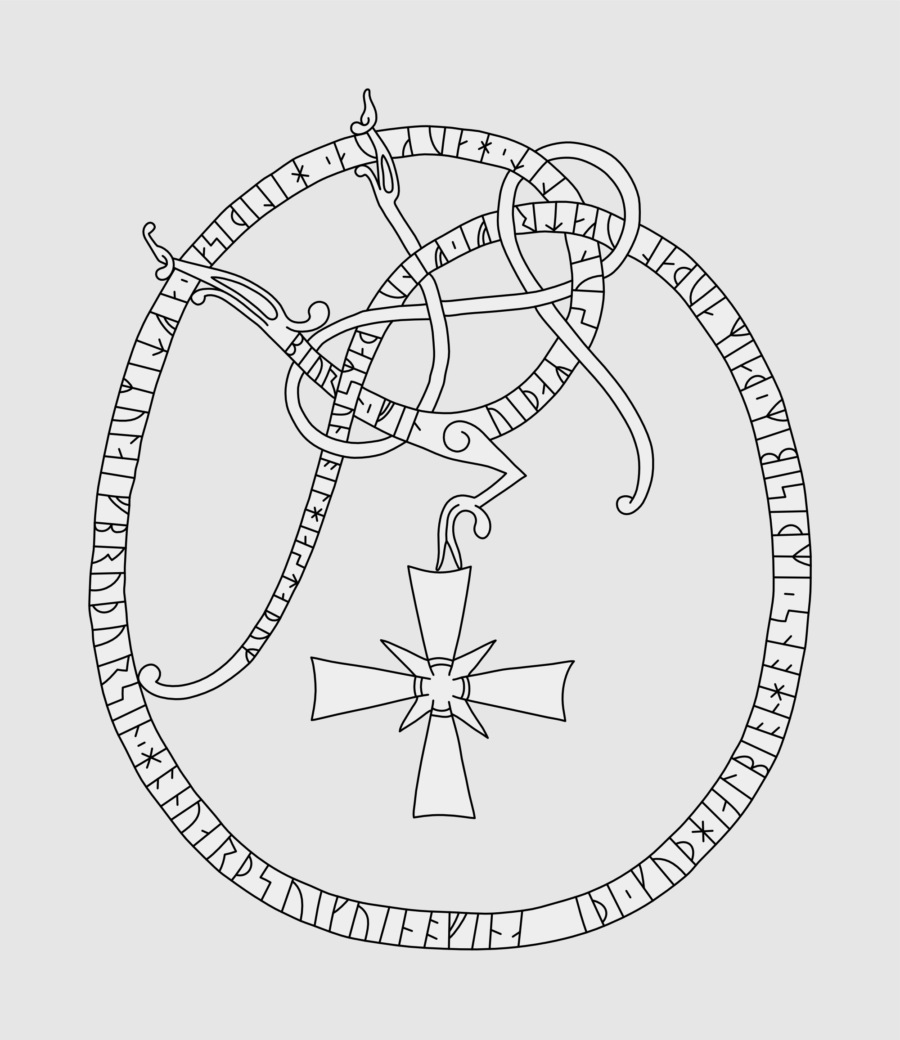
U 130
May 30, 2019
The carvings of the rock-face are in the runestone style Pr 4 (c. 1070-1100) pertaining to the Urnes style.
The inscription is c. 1,90 m tall and 1,54 m wide.
Runic inscription
The runic text begins at the neck of the animal.
Runes
ᛒᛁᚢᚱᚿ ‘ ᚠᛁᚿᚢᛁᚦᛆᛦ ᛋᚢᚿ ᛚᛁᛏ ‘ ᚼᛆᚢᚴᚢᛆ ‘ ᚼᛁᛚᛁ ᚦᛁᛋᛆ ‘ ᛆᚠᛏᛁᛦ ᚢᛚᛆᛁᚠ ᛒᚱᚢᚦᚢᚱ ᛋᛁᚿ ‘ ᚼᚭᚿ ᚢᛆᚱᚦ ᛋᚢᛁᚴᚢᛁᚿ ᚭ ᚠᛁᚿᛆᛁᚦᛁ ‘ ᚴᚢᚦ ᚼᛁᛆᛚᛒᛁ ᚭᚿ ᚼᚭᚿᛋ ‘ ᛁᛦ ᚦᛁᛋᛁ ᛒᛁᛦ ‘ ᚦᛆᛁᛦᛆ ᚢᚦᛆᛚ ᚢᚴ ᛆᛏᚱᚠᛁ ‘ ᚠᛁᚿᚢᚦᛆᛦ ᛋᚢᚿᚭ ᛁᛚᚼᛁᛆᛋᛏᛆᚦᚢᛘ
Transliteration
biurn ‘ finuiþaʀ sun lit ‘ haukua ‘ hili þisa ‘ aftiʀ ulaif bruþur sin ‘ hon uarþ suikuin o finaiþi ‘ kuþ hialbi on hons ‘ iʀ þisi biʀ ‘ þaiʀa uþal uk atrfi ‘ finuþaʀ suno| |o ilhiastaþum
Old Norse
Biorn, FinnviðaR sunn, let hoggva hælli þessa æftiR Olæif, broður sinn. Hann varð svikvinn a Finnæiði. Guð hialpi and hans. ER þessi byR þæiRa oðal ok ættærfi, FinnviðaR suna a Ælgiastaðum.
English
Bjǫrn, Finnviðr’s son, had this rock-slab cut in memory of Óleifr, his brother. He was betrayed* at Finnheiðr. May God help his spirit. This estate is the allodial land and family inheritance of Finnviðr’s sons at Elgjastaðir.
*The betrayal of Óleifr at Finnheiðr is interpreted to mean that he was killed in an underhanded way like an ambush instead of in an honourable way like direct combat.
———
Nora, Uppland, Sweden
U 130